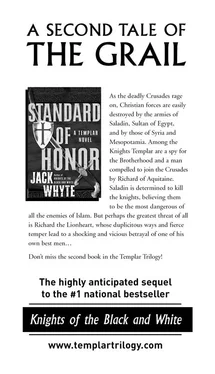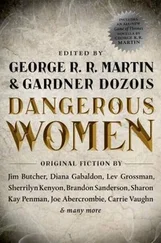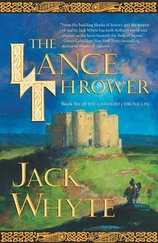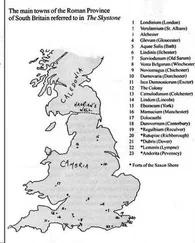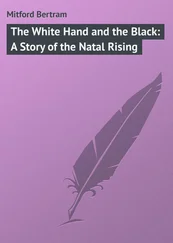There were brackets all along both walls, at head height, to hold torches of the kind they had brought with them, and de Montbard grunted, then reached up and placed his torch in one of them before turning back towards the entranceway.
“Torches,” he said, his voice echoing in the confined space. “We’ll need more light. Help me load the rest of these sconces, then let’s see what’s in here.”
They quickly brought down more torches from the Hall and, minutes later, the interior of the gallery now brightly lit by half a score of flambeaux, they stood side by side, examining the rows of boxes lining the walls.
“More jars,” St. Clair murmured. “These people must have had a manufactory making nothing but clay jars.”
“They’re not all jars,” de Montbard said. “Let’s open some of those wooden chests.”
The first contained loose pieces of jewelry, some of them barbarically ornate, others delicately made, and all of them reflecting the dancing light from above. They were in no order at all, appearing to have been simply thrown into the chest, and after a glance at them, de Montbard turned to open a second, larger chest that proved to be full of gold coinage, also piled loosely, with no attempt having been made to put the coins in any kind of order. St. Clair glanced over and saw silver pieces gleaming in places among the golden coins, but his attention had been seized by one particular piece of jewelry in the open chest at his feet, and he reached down to pull it free of the other pieces with which it was entangled. It was a glittering necklace, a circle of heavy, woven gold wire from which depended a selection of splendid stones in blue and green, strung on a web of finer gold wire and designed to grace the breast of some wealthy woman. The green stones were rectangular lozenges, long and narrow, but the blue jewels were teardrop shaped, smooth and polished, and the gap where one of them was missing was plainly evident. He knew that the missing piece was the very stone he had found in the tunnels above, and he wondered who had stolen it originally, for there was not the slightest doubt in his mind, seeing the necklace, that someone had stolen it, a thousand years earlier. But then, his curiosity strangely satisfied, he dropped the necklace back into the chest, closed the lid, and turned to see what else de Montbard had found.
The other knight was hauling heavy vessels around, pulling and pushing them this way and that to see what was behind them, and St. Clair, recognizing nothing about them, asked what they were. Montbard’s curt response—“ceremonial vessels”—meant nothing to him, but he could see that whatever they were, the vessels were in no way precious. Many of them were made of polished stone, some green and some brown, but the majority appeared to be of bronze, and they all looked clumsy and awkwardly formed, so St. Clair left his companion to whatever he was doing and turned his attention to the other boxes lining the walls.
“More than three quarters of this is jars like those upstairs.”
De Montbard straightened up. “I had noticed that. I think what’s in here is the most valuable material—the rest of it, upstairs in the main hall, is probably less important.”
“Important? To whom? What do the jars contain, Montbard?”
De Montbard shrugged. “Have you seen me look into any of them? We’ll find out later what they hold, but my guess is that they contain parchment scrolls, tightly bound and sealed inside the jars with wax to protect them against time and dampness. I believe we will find they are the recorded annals of the priests who left them here.”
Disappointed, despite having guessed at something of the sort, St. Clair sighed and looked around him again. “And what about those things there, the ceremonial vessels, what are they for?”
“They would have been used in temple rites. Some of them are probably unimaginably ancient.”
“But they’re made of stone.”
“Aye, most of them. Stone or bronze.”
“So they are worth nothing.”
“No, not if you wanted to sell them in the souk. Why would you even say that?”
St. Clair grinned wryly. “Because it’s beginning to look as though the vaunted treasure that our Lore speaks of is less than might have been expected. So far, one case of jeweled pieces and one more of gold and silver coins. Hardly a massive hoard of wealth.”
De Montbard looked him in the eye, smiling. “That is only because your expectations are born of your experience, my young friend. Treasure, to you, should be treasure in today’s meaning. Bear in mind, the churchmen who concealed this trove were not Christian churchmen as we know them. This hoard, as you call it, was buried by the priests of the original Christian Church, the Church that admired poverty and preached the virtues of owning nothing of value.”
“Then what about the gold there, and the jewels?”
“Two boxes so far—as you say—out of all of this collection,” de Montbard answered. “They were probably collected in the temple, as offerings in lieu of sacrifices. We will never know where they came from or how they were gathered, but proportionally they amount to next to nothing. King Baldwin will be happy to accept all of it, in return for allowing us to keep what is left.” He placed one hand flat on the side of the jar nearest to him and patted it gently. “ This is our Order’s treasure, Stephen, here in these jars. And perhaps …” His voice trailed off and he moved away towards the far end of the gallery, where he stood staring at the blank wall.
“And perhaps what?”
“Does it not strike you as being odd that this wall should be plain and unused, where the other walls are honeycombed with storage cells?”
“Odd? No, I think not. Why should it be odd? This is an end wall.”
De Montbard grimaced. “Wrong, Stephen. Disabuse yourself. There is a secret here, somewhere … Do you see any ankhs carved anywhere?”
“No.” Stephen’s response was emphatic. “And before you ask, I know there are none because I’ve been looking for decorations of any kind, merely out of curiosity. There are none. Why would you think there might be?”
De Montbard had knelt down on one knee and was peering at the bottom of the wall. “Because, my youthful friend, there ought to be. There is more in here than meets the eye. I am convinced of that.” He stood up again and turned away from the wall, his gaze traveling all over the chamber. “And yet there is nothing,” he continued, speaking to himself as much as to St. Clair. “Nothing at all.”
“What else did you expect?”
De Montbard rounded on him then, drawing himself up to his full height, his eyes flashing with sudden impatience. “Trickery, Stephen,” he snapped. “Subterfuge and deceit. This place was built by the people who built the pyramids in Egypt, the finest stonemasons who ever lived. You saw the workmanship of the opening—the intricacy of that doorway in the steps. Anyone possessing the learning and the craft required to build such a thing would have been more than capable of hiding a simple cavity behind a false wall.” He whipped out his sword and slashed backward, underhand, striking its blade loudly and dramatically against the wall behind him. “And I believe this wall is false.”
His impatience vanished as quickly as it had appeared, and he turned slowly in a full circle, his eyes sweeping the entire room, floor and walls, including the one at his back. “And if that is true, then there must be a key to opening it, just as the ankh was the key to opening the other. So where could it be?”
“The sconces? They are the only things in the room that are not made of solid stone.”
De Montbard’s eyebrows shot up. “Of course! Try them. You take that side. I’ll handle this one.”
Читать дальше
Конец ознакомительного отрывка
Купить книгу
